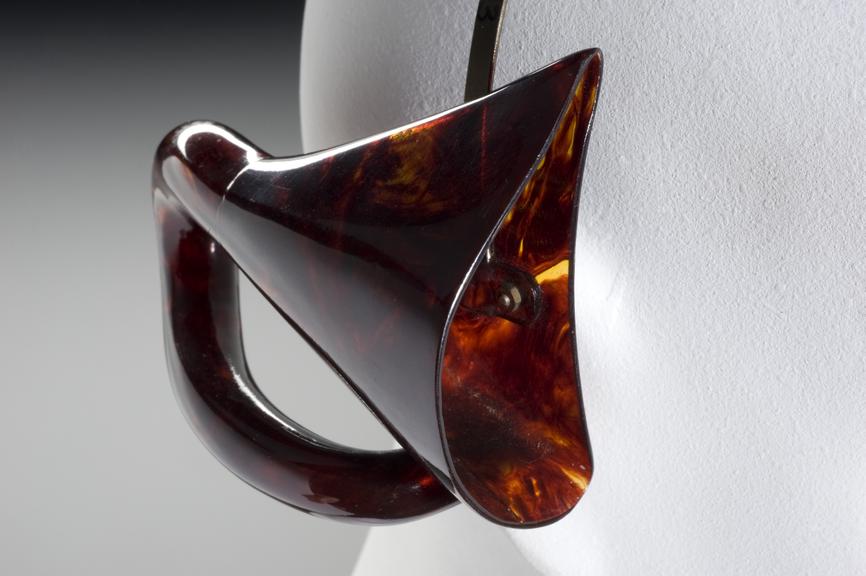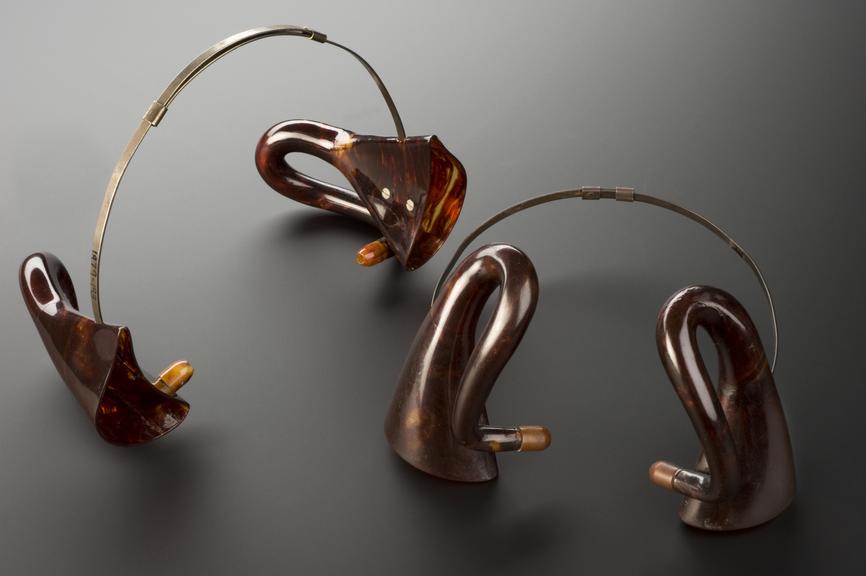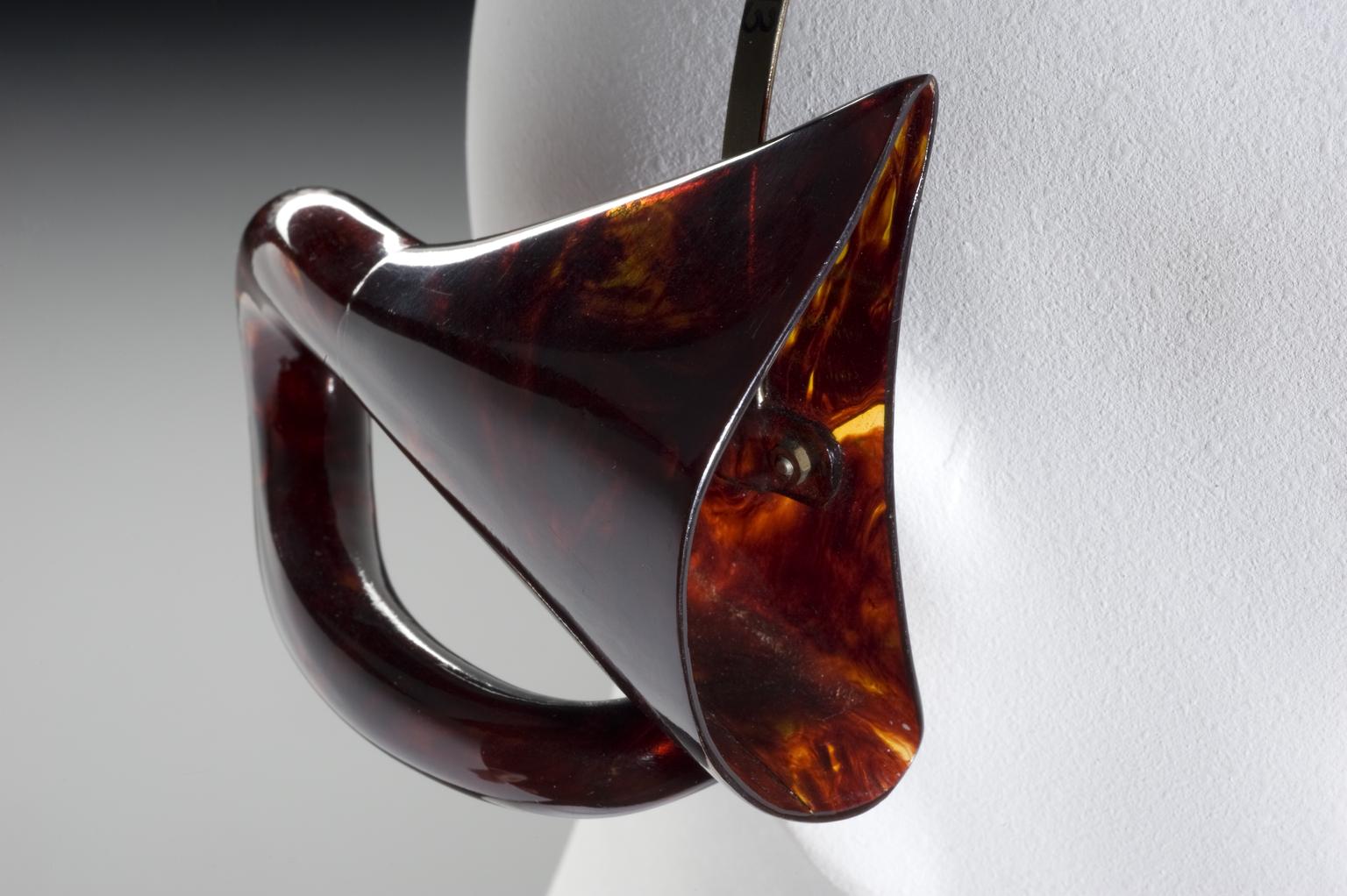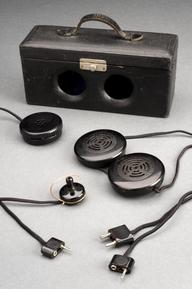













Two pairs of auricle hearing aids, made of imitation tortoiseshell and mounted on adjustable head bands, European, 1900-1930.
Imagine you were losing your hearing and decided you needed assistance. How might you choose a device that could help you? Perhaps you’d simply choose the gadget that let you hear most clearly. Or maybe you’d prefer the one that was easiest to use, or most convenient to wear. Would it be the most affordable or just one that nobody else could see? These may look like a strange form of headphones, but the ‘acoustic headband’ was a type of hearing aid some people chose to wear at the turn of the 20th century. Each auricle would be plugged into the ear and kept in position by the headband. They could be surprisingly effective at amplifying and directing sound into the ear.
Surprisingly – given its outlandish appearance – the acoustic headband was actually designed to be concealed. Then, as now, some people just didn’t like others to know that they had naturally poor hearing. Instead they chose hearing devices that could be hidden or disguised, as things such as fans, clothing and even furniture. Using the camouflage of extravagant Victorian hairdos, hats and other decorations, acoustic headbands like this one could actually be disguised quite effectively.
Concealment remains important to hearing aid design today, where new ‘in-ear’ hearing aids are undetectable by observers. However, many earlier concealed devices were often less effective than those which were more visible. That people chose to use them perhaps reveals something about how society thinks about deafness. Are we simply afraid of admitting imperfect hearing? Choosing which hearing aid to use, if at all, clearly remains a highly personal decision.






